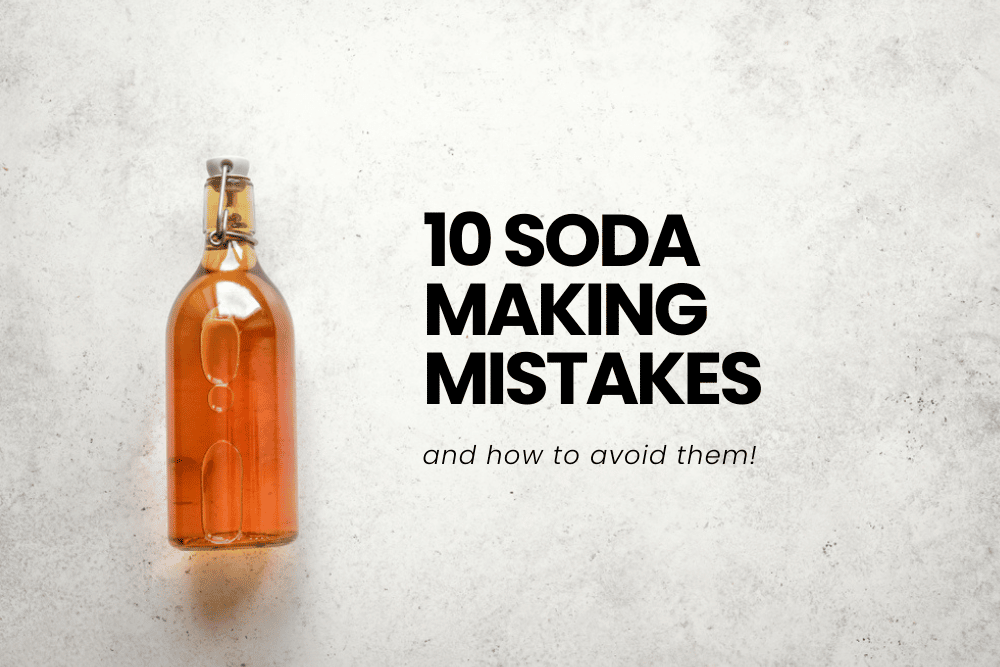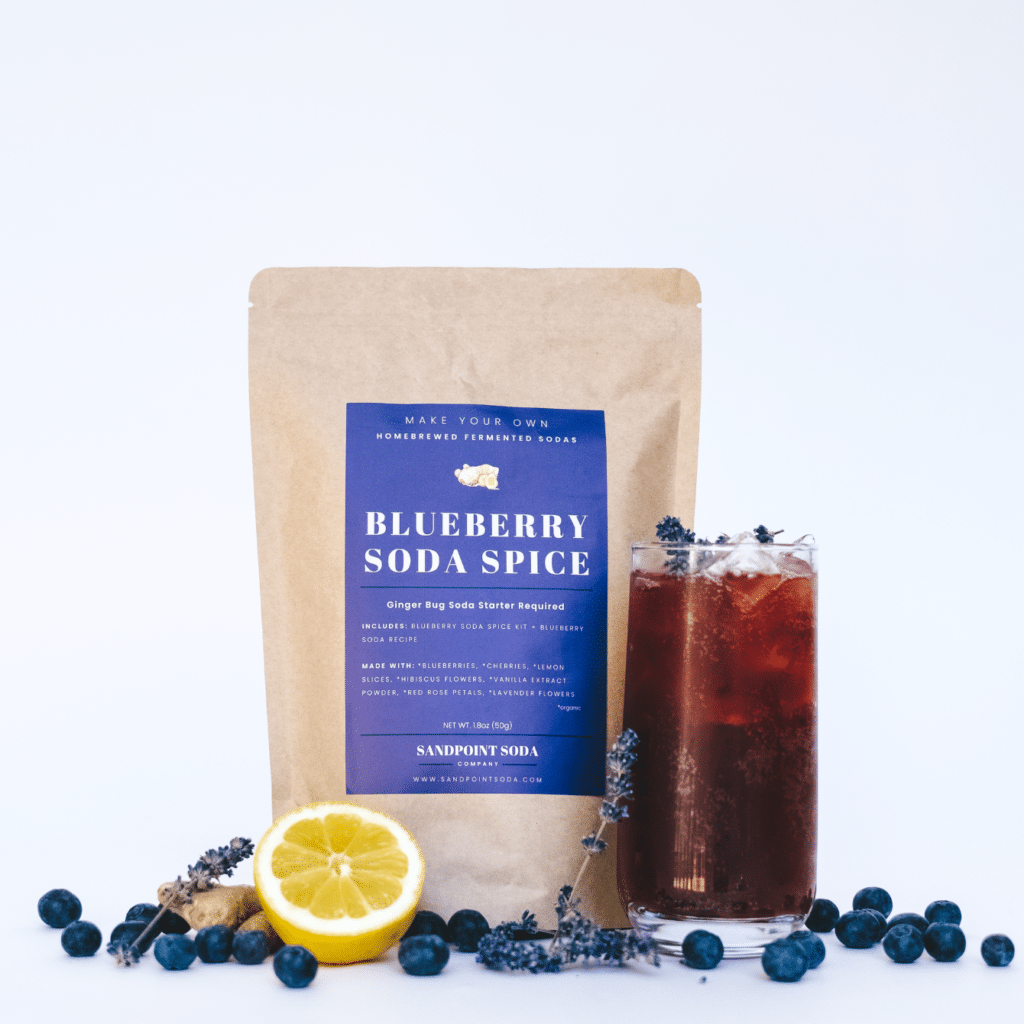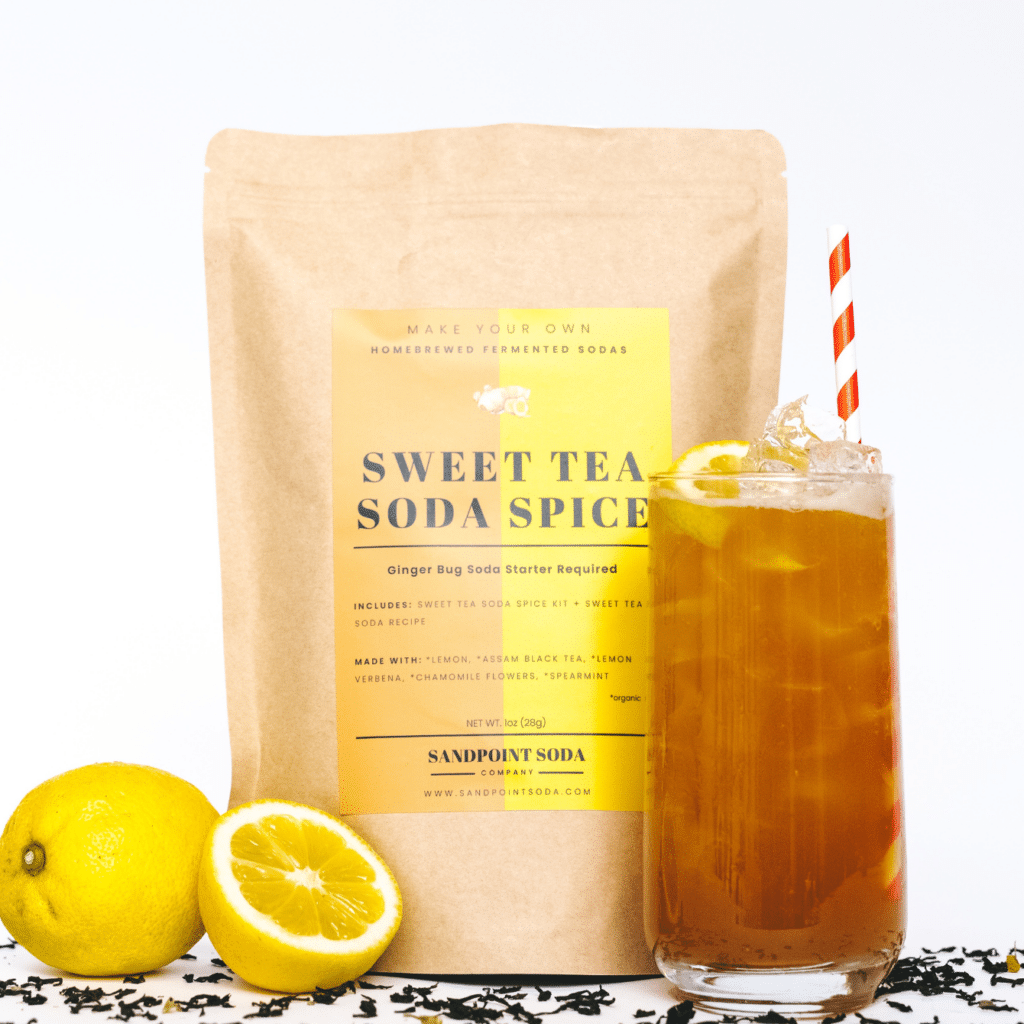10 Common Ginger Bug Soda Making Mistakes

Homebrewed probiotic sodas are some of the easiest fermented drinks to make--and a great way for budding homebrewers to get started. Once you get the hang of a few basic rules, anyone can create expert-level soda drinks at home.
Just because it's easy, doesn't mean that there aren't pitfalls that beginner soda-makers, and experts alike, can fall victim to. Fermentation is a bit of an art as well as a science. Sometimes, a brew just doesn't work out despite our best efforts. It really truly happens to the best of us--all the time.
There are some basic pitfalls, however, that can be easily avoided with a little know-how. I made all of these mistakes (and then some) when I first started brewing probiotic sodas at home. Hopefully, this list helps you to avoid many of the same mistakes that I did. Enjoy!
-
Mistake #1: Not Keeping Your Ginger Bug Warm
A Ginger Bug starter culture ferments best in temperatures between 75-85°F. During the winter (or if you keep your household temperatures significantly below these temperatures), it can be a bit tricky to accomplish this. Here are some tips on how to keep your Ginger Bug culture warm:
- Cabinet Above An Appliance: One simple way to keep your Ginger Bug culture warm is to place it in a high cabinet above an appliance such as an oven or refrigerator. The appliance releases a fair bit of heat and that heat will rise up--thus, a cabinet above an appliance that is used frequently is going to be warmer than room temperature.
- Use a Heat Mat: If you keep your home temperature below 70°F, then a great option to keep your Ginger Bug warm is to use a heat mat. These heat mats are typically used to keep plant seedlings warm, but they work great for ferments too! They maintain a temperature of about 80°F, are very affordable (around $10 on Amazon), and use very little energy. Here is an example: Heat Mat For Fermentation
-
Mistake #2: Using Un-Filtered Tap Water
To put it simply: tap water kills bugs. The cocktail of chemicals (including chlorine, pesticides, pharmaceuticals, and others) found in tap water can and will readily kill your Ginger Bug culture. Chlorine is to be particularly avoided at all costs. If your water supply is chlorinated, it must be filtered before it can be used to feed your bug or make soda. Refrigerator filters can work if they remove chlorine. The cleaner the water, the healthier the bug. If you don't have access to chlorine-free water, then try purchasing a bottle of distilled, purified, or natural spring water to use for Ginger Bug feedings.
-
Mistake #3: Using Sugar Alternatives for Ginger Bug Feedings
Sugar alternatives, like monk fruit extract or stevia, cannot be used for fermentation. These are not true sugars and will not ferment; thus, you cannot use these sugars to feed your Ginger Bug starter culture. The best sugars to use to feed your Ginger Bug Probiotic Soda Starter are raw sugars like turbinado, sucanat, and muscovado sugar or organic cane sugar.
The same goes for making soda--stevia and monk fruit cannot be used to create fermented soda. The soda fermentation process converts sugars into carbon dioxide and alcohols. Without sugar, no fermentation can occur. You can experiment with using some true sugar and some sugar alternatives when making soda (for example, you could use 50% cane sugar and 50% monk fruit extract), but you must use some sugar. You can also experiment with using other sugars such as coconut sugar, date sugar, honey and other true sugars instead of cane sugar if you prefer.
-
Mistake #4: Using the Wrong Ginger Root
The ginger root that you use to feed your Ginger Bug must be organic, unpeeled, unwashed, and grated. Here's why:
- Why use organic ginger root? The bacteria and yeast ("bugs") that we are trying to cultivate live on the skin of the ginger root. Conventional ginger root is sprayed with pesticides which will kill those friendly bugs.
- Why use unpeeled ginger root? Same logic as above--we need the bugs that live on the skin of the ginger root. Peeling the ginger will remove our friendly bugs.
- Why use unwashed ginger root? Washing your ginger root will kill or severely inhibit our bugs (especially if your tap water contains chlorine).
- Why use grated ginger root? Grating the ginger root helps to spread out the bugs--making it easier for the bugs to integrate into your culture.
-
Mistake #5: Adding Too Little Sugar to your Soda
While it is perfectly fine to use less sugar than a soda recipe may call for---you must use enough sugar to support the fermentation process. Using too little sugar can inhibit the fermentation process and result in a flat soda with very little carbonation.
Remember--much of the sugar that you use to make soda gets converted during the fermentation process by the Ginger Bug culture. If you'd like your soda to be less sweet, you have two options:
- Use Less Sugar: Cut the amount of sugar in your recipe by up to 50%.
- Ferment Longer: Allow your soda to ferment in your swing-top bottle at room temperature for 48 hours or more (remembering to "burp" your bottles and release carbon dioxide to prevent too much pressure from building up in your bottles). The longer you allow your soda to ferment, the more sugar gets consumed by the bacteria in your culture.
-
Mistake #6: Missed Ginger Bug Feedings
Your Ginger Bug culture must be fed daily with ginger, sugar, and water. Missing a single feeding is not a big deal, but missing multiple days in a row can kill your bug. If you miss a feeding, it is important to feed your Ginger Bug as soon as you can and resume daily feedings.
Do not feed your Ginger Bug more than the standard feeding amount after a missed feeding. Simply continue with a normal feeding as soon as possible. Overfeeding your Ginger Bug can stress and weaken your culture further.
-
Mistake #7: Waiting Too Long to Bottle Soda
Soda is meant to be a lightly-fermented fizzy drink. The entire process should take less than 48 hours when using a strong active Ginger Bug Probiotic Soda Starter. Once your Ginger Bug is added to your soda mixture, you should see a light layer of bubbles around the top of the mixture. You're not looking for full on foam (although that would be great). Even just a ring of bubbles around the perimeter of your mixture is good enough. You want confirmation that your bug is alive and fermenting. At this point, we can bottle our soda knowing that the fermentation process will continue and create a fizzy beverage.
If you see no bubbles at all after a full 24 hours, then something may have gone wrong (try adding another "dose" of Ginger Bug and letting ferment for up to 24 hours until the bubbles form).
-
Mistake #8: Adding Your Ginger Bug to a Hot Soda
Ginger Bugs cannot survive in temperatures much warmer than 95°F. A common mistake that people make when making fermented soda is adding their Ginger Bug culture to a soda mixture that is too hot. This is only a problem if you are creating your soda mixture from a stove-top brew (like with our artisan Soda Spice Kits) or brewing a hot tea. You must allow your soda to cool to room temperature before adding your Ginger Bug culture. An easy way to do this is to put your mixture in the refrigerator for a few hours until it has cooled down sufficiently.
-
Mistake #9: Forgetting to Burp Your Soda Bottles
A glass bottle can only contain so much pressure before it explodes. When your soda is bottled in swing-top glass bottles and left at room-temperature to ferment, the pressure inside the bottle builds quickly. After 24 hours, you'll have some serious carbonation on your hands. Some people like to let their sodas ferment for longer than 24 hours (for example, root beer and ginger beer can be long fermented for a "boozy" flavor). When fermenting in bottles for longer than 24 hours, it is necessary to "burp" your soda bottles to release some of the built up carbon dioxide.
Burping your soda bottles is easy. Grab a swing-top bottle and slowly release the swing-top until you hear the "hiss" of gasses being released. Let a small amount of gas out and then quickly reseal the bottle. You should see bubbles/foam rushing to the top--make sure to reseal fast! Allow the bottles to ferment for another 12-24 hours before burping again.
-
Mistake #10: Refrigerating Your Ginger Bug Improperly
While it is technically possible to refrigerate your Ginger Bug culture, it must be done in a specific way to ensure that your culture survives the low temperatures.
- Step 1: Make sure that your Ginger Bug is strong, active, and well-fed before refrigeration.
- Step 2: Place your Ginger Bug culture into an air-tight container.
- Step 3: Put your Ginger Bug in the refrigerator in a warm spot. DO NOT place your Ginger Bug in a spot where it will ever experience freezing temperatures (like towards the back of the fridge).
- Step 4: Feed your Ginger Bug weekly when stored at refrigeration temperatures.
Using these steps, your Ginger Bug will be kept at a semi-dormant state. When you are ready to use your Ginger Bug again, here are the steps you must take to "wake up" your bug:
- Step 1: Remove your Ginger Bug from the fridge and replace the air-tight lid with a breathable cloth again.
- Step 2: Keep your Ginger Bug in a warm location and resume daily feedings of ginger, sugar, and water.
- Step 3: You can use your Ginger Bug to make soda once it is bubbly and active again. This may take a few days to occur.


